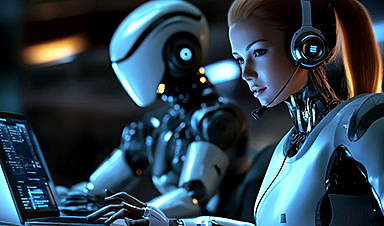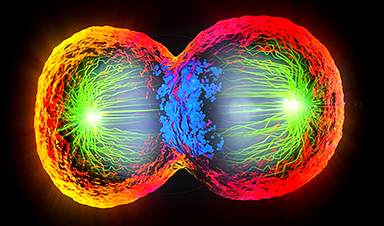Nanotechnology, which involves working with materials at the atomic or molecular level, is becoming increasingly important in space exploration. By improving strength, thermal stability, electrical conductivity, and radiation resistance, nanotechnology is helping create lighter, more durable spacecraft, better life support systems, and stronger protective gear for astronauts.1
Nanomaterials in Spacecraft Construction
Materials like carbon nanotubes (CNTs) and graphene reduce spacecraft weight while enhancing durability against radiation, extreme temperatures, and the vacuum of space. These improvements lower launch costs and enhance mission performance.2
CNTs are known for their impressive strength-to-weight ratio, thermal stability, and radiation resistance.2 They can achieve tensile strengths up to 63 GPa—far exceeding that of steel while being significantly lighter. Similarly, graphene, a two-dimensional nanomaterial, offers excellent thermal conductivity (approximately 5000 W/m·K) and electrical properties, making it useful for thermal management and electronic components.3
NASA is actively integrating nanotechnology into spacecraft materials. The Super Lightweight Aerospace Composites (SAC) project, for example, is working to replace traditional materials like aluminum, titanium, and carbon fiber-reinforced polymers with CNT-based composites.
Nanotechnology in Space Suits and Protective Equipment
Radiation Protection
Radiation is one of the biggest dangers for astronauts, particularly on missions beyond Earth’s protective magnetosphere. Traditional spacesuit materials offer limited shielding against cosmic rays and solar radiation, but nanotechnology provides new solutions.
Advanced nanomaterials like boron nitride nanotubes (BNNTs) are being explored for radiation protection, as they have strong neutron absorption properties and a lightweight structure.2,4 Graphene-based materials, due to their dense molecular structure, also provide excellent radiation deflection and absorption.2
Recent research by Cheraghi et al. has shown that converting raw boron nitride (BN) into nanotubes and aerogels has significantly improved shielding capabilities. Adding hydrogen-rich materials enhances their ability to block harmful radiation.5
Advanced Spacesuit Fabrics
Implementing nanotechnology into space suit design makes them more flexible, durable, and resistant to space hazards like micrometeoroid impacts. Traditional spacesuits can be rigid, limiting astronaut movement during extravehicular activities (EVAs). CNTs and graphene-based nanofibers, when woven into textiles, create lightweight but strong fabrics that allow greater flexibility without sacrificing safety.1, 6
These materials also improve elasticity in key suit components, reinforcing joints and articulation points for better movement in microgravity.1 Additionally, nano-coatings increase abrasion resistance and protect against micrometeoroid impacts. Innovations like phase-change materials (PCMs) integrated into nanocomposite fabrics help regulate body temperature, ensuring astronaut comfort in extreme space conditions.7
Nanotechnology in Life Support Systems
Water purification is essential to life support systems in space, providing a reliable supply for drinking, cooling, and oxygen generation. Traditional water recycling systems are effective but face limitations in efficiency and durability in space environments.
Nanotechnology improves these systems. Nanofiltration membranes made from materials like graphene oxide remove contaminants such as heavy metals, salts, and microbial pathogens while maintaining high water quality. These membranes are also highly durable, which is important for long-duration missions to the Moon and Mars.2, 8
Spacecraft operate in a closed-loop environment, where air must be continuously purified, and CO2 levels must be controlled to maintain a habitable atmosphere.2 Metal-organic frameworks (MOFs), which have a high surface area and tunable porosity, capture CO2 and, in some cases, facilitate its conversion into oxygen.2, 9
Nanotechnology also enhances air filtration. Advanced filters remove trace contaminants such as volatile organic compounds (VOCs) and airborne particulates, improving air quality and reducing health risks for astronauts.2, 8
NASA’s Clean Water Program is a prime example of how nanotechnology is transforming life support systems. The program uses nano-based filtration to purify and recycle water on the International Space Station (ISS).12 The European Space Agency (ESA) is also developing nanomaterial-based systems to improve air and water purification, focusing on long-term sustainability and efficient resource use.13
Robotics and Nanotechnology in Space Exploration
Nanotechnology is advancing space robotics by enabling the development of more efficient sensors and actuators. These improvements enhance the performance of robotic systems used in planetary exploration and satellite maintenance. Nanoscale materials, such as CNTs and graphene, are integral in creating lightweight, robust components that improve the sensitivity and precision of robotic systems.10
The integration of artificial intelligence (AI) with nanotechnology increases the autonomy of space robots. AI-driven systems process data in real time, predict environmental changes, and adapt to unexpected challenges. This capability is essential for missions that require independent decision-making, such as navigating rough terrain or conducting satellite repairs without direct Earth-based control.11
NASA’s Perseverance Rover demonstrates how nanotechnology and AI improve robotic performance in extreme environments. The rover’s Planetary Instrument for X-ray Lithochemistry (PIXL) is a spectrometer that uses AI and nanoscale engineering to map the chemical composition of Martian minerals. PIXL emits focused X-ray beams to analyze surface elements and autonomously detects and prioritizes promising targets. This approach reduces data collection time while increasing scientific accuracy.14
Future Potential of Nanotechnology in Space Exploration
Nanotechnology has the potential to improve deep space missions, including Mars exploration and interstellar travel. By making materials lighter, stronger, and more efficient, it is becoming an essential tool in next-generation space exploration.
For these advancements to be fully realized, scalable and cost-effective production methods for nanomaterials are needed. Collaboration among materials scientists, aerospace engineers, and biologists will be crucial. AI and machine learning will also help accelerate the development and deployment of nano-enabled technologies, making space missions more efficient and autonomous.
As research continues, nanotechnology will likely shape the future of space travel in ways we are only beginning to understand. If you want to learn more about space technologies, consider exploring developments in propulsion systems, in-situ resource utilization, and extraterrestrial habitat construction. Additionally, you may find these articles insightful:
- Can We Really Live on the Moon? Komatsu’s Vision for Lunar Construction
- A Guide to the Space Exploration Technologies of Today
- Machine Learning Predicts Aerospace Pressure Fluctuations
- The Role of Steel in Pioneering Aerospace Innovations
- Understanding Cosmic Particle Acceleration
References and Further Readings
1. Phogat, P.; Shreya; Jha, R.; Singh, S. (2024). The Role of Nanotechnology in Space Exploration and Colonization. Nanotechnology in Societal Development. https://link.springer.com/chapter/10.1007/978-981-97-6184-5_12
2. Elabiad, S. (2025). Nanotechnology for Space Exploration. [Online] SSRN. Available at: https://papers.ssrn.com/sol3/papers.cfm?abstract_id=5080329
3. Kumar, A.; Sharma, K.; Dixit, AR. (2020). Carbon Nanotube-and Graphene-Reinforced Multiphase Polymeric Composites: Review on Their Properties and Applications. Journal of Materials Science. https://link.springer.com/article/10.1007/s10853-019-04196-y
4. Ryu, K.-H.; Kang, M.; Kim, J.; You, N.-H.; Jang, S. G.; Jeong, K.-U.; Ahn, S.; Kim, D.-Y. (2024) Spacesuit Textiles from Extreme Fabric Materials: Aromatic Amide Polymer and Boron Nitride Nanotube Composite Fiber for Neutron Shielding and Thermal Management. Advanced Fiber Materials. https://link.springer.com/article/10.1007/s42765-024-00432-6
5. Cheraghi, E.; Chen, S.; Yeow, JT. (2021). Boron Nitride-Based Nanomaterials for Radiation Shielding: A Review. IEEE Nanotechnology Magazine. https://ieeexplore.ieee.org/document/9403728
6. Kumari, D.; Phogat, P.; Singh, S.; Jha, R. (2024). Enhanced Electrochemical Behavior of C@ Cds Core-Shell Heterostructures. Materials Science and Engineering: B. https://www.sciencedirect.com/science/article/pii/S0921510724000394
7. Kumar, T.; Phogat, P.; Sahgal, V.; Jha, R. (2023). Surfactant-Mediated Modulation of Morphology and Charge Transfer Dynamics in Tungsten Oxide Nanoparticles. Physica Scripta. https://iopscience.iop.org/article/10.1088/1402-4896/ace566/meta
8. Arroyo, CL.; Concepcion, R.; Bandala, A. (2023). Identifying the Future Trends of Bioregenerative Life Support Systems for Space Exploration. [Online] IEEE. Available at: https://ieeexplore.ieee.org/abstract/document/10589031
9. Kong, F.; Chen, W. (2024). Carbon Dioxide Capture and Conversion Using Metal–Organic Framework (Mof) Materials: A Comprehensive Review. Nanomaterials. https://pmc.ncbi.nlm.nih.gov/articles/PMC11356948/
10. Russo, A.; Lax, G. (2022). Using Artificial Intelligence for Space Challenges: A Survey. Applied Sciences. https://www.mdpi.com/2076-3417/12/10/5106
11. Kumar, S.; Tomar, R. (2018). The Role of Artificial Intelligence in Space Exploration. [Online] IEEE. Available at: https://ieeexplore.ieee.org/abstract/document/8668161
12. Gaskill, ML. (2023). NASA Achieves Water Recovery Milestone on International Space Station [Online] NASA. Available at: https://www.nasa.gov/missions/station/nasa-achieves-water-recovery-milestone-on-international-space-station/
13. ESA. (2021). How ESA technology contributes to worldwide water security. [Online] ESA. Available at: https://www.esa.int/Enabling_Support/Preparing_for_the_Future/Space_for_Earth/How_ESA_technology_contributes_to_worldwide_water_security
14. NASA. (2024). Here’s How AI Is Changing NASA’s Mars Rover Science. [Online] NASA. Available at: https://www.nasa.gov/missions/mars-2020-perseverance/heres-how-ai-is-changing-nasas-mars-rover-science/
News
How Everyday Plastics Quietly Turn Into DNA-Damaging Nanoparticles
The same unique structure that makes plastic so versatile also makes it susceptible to breaking down into harmful micro- and nanoscale particles. The world is saturated with trillions of microscopic and nanoscopic plastic particles, some smaller [...]
AI Outperforms Physicians in Real-World Urgent Care Decisions, Study Finds
The study, conducted at the virtual urgent care clinic Cedars-Sinai Connect in LA, compared recommendations given in about 500 visits of adult patients with relatively common symptoms – respiratory, urinary, eye, vaginal and dental. [...]
Challenging the Big Bang: A Multi-Singularity Origin for the Universe
In a study published in the journal Classical and Quantum Gravity, Dr. Richard Lieu, a physics professor at The University of Alabama in Huntsville (UAH), which is a part of The University of Alabama System, suggests that [...]
New drug restores vision by regenerating retinal nerves
Vision is one of the most crucial human senses, yet over 300 million people worldwide are at risk of vision loss due to various retinal diseases. While recent advancements in retinal disease treatments have [...]
Shingles vaccine cuts dementia risk by 20%, new study shows
A shingles shot may do more than prevent rash — it could help shield the aging brain from dementia, according to a landmark study using real-world data from the UK. A routine vaccine could [...]
AI Predicts Sudden Cardiac Arrest Days Before It Strikes
AI can now predict deadly heart arrhythmias up to two weeks in advance, potentially transforming cardiac care. Artificial intelligence could play a key role in preventing many cases of sudden cardiac death, according to [...]
NanoApps Medical is a Top 20 Feedspot Nanotech Blog
There is an ocean of Nanotechnology news published every day. Feedspot saves us a lot of time and we recommend it. We have been using it since 2018. Feedspot is a freemium online RSS [...]
This Startup Says It Can Clean Your Blood of Microplastics
This is a non-exhaustive list of places microplastics have been found: Mount Everest, the Mariana Trench, Antarctic snow, clouds, plankton, turtles, whales, cattle, birds, tap water, beer, salt, human placentas, semen, breast milk, feces, testicles, [...]
New Blood Test Detects Alzheimer’s and Tracks Its Progression With 92% Accuracy
The new test could help identify which patients are most likely to benefit from new Alzheimer’s drugs. A newly developed blood test for Alzheimer’s disease not only helps confirm the presence of the condition but also [...]
The CDC buried a measles forecast that stressed the need for vaccinations
This story was originally published on ProPublica, a nonprofit newsroom that investigates abuses of power. Sign up to receive our biggest stories as soon as they’re published. ProPublica — Leaders at the Centers for Disease Control and Prevention [...]
Light-Driven Plasmonic Microrobots for Nanoparticle Manipulation
A recent study published in Nature Communications presents a new microrobotic platform designed to improve the precision and versatility of nanoparticle manipulation using light. Led by Jin Qin and colleagues, the research addresses limitations in traditional [...]
Cancer’s “Master Switch” Blocked for Good in Landmark Study
Researchers discovered peptides that permanently block a key cancer protein once thought untreatable, using a new screening method to test their effectiveness inside cells. For the first time, scientists have identified promising drug candidates [...]
AI self-cloning claims: A new frontier or a looming threat?
Chinese scientists claim that some AI models can replicate themselves and protect against shutdown. Has artificial intelligence crossed the so-called red line? Chinese researchers have published two reports on arXiv claiming that some artificial [...]
New Drug Turns Human Blood Into Mosquito-Killing Weapon
Nitisinone, a drug for rare diseases, kills mosquitoes when present in human blood and may become a new tool to fight malaria, offering longer-lasting, environmentally safer effects than ivermectin. Controlling mosquito populations is a [...]
DNA Microscopy Creates 3D Maps of Life From the Inside Out
What if you could take a picture of every gene inside a living organism—not with light, but with DNA itself? Scientists at the University of Chicago have pioneered a revolutionary imaging technique called volumetric DNA microscopy. It builds [...]
Scientists Just Captured the Stunning Process That Shapes Chromosomes
Scientists at EMBL have captured how human chromosomes fold into their signature rod shape during cell division, using a groundbreaking method called LoopTrace. By observing overlapping DNA loops forming in high resolution, they revealed that large [...]





















